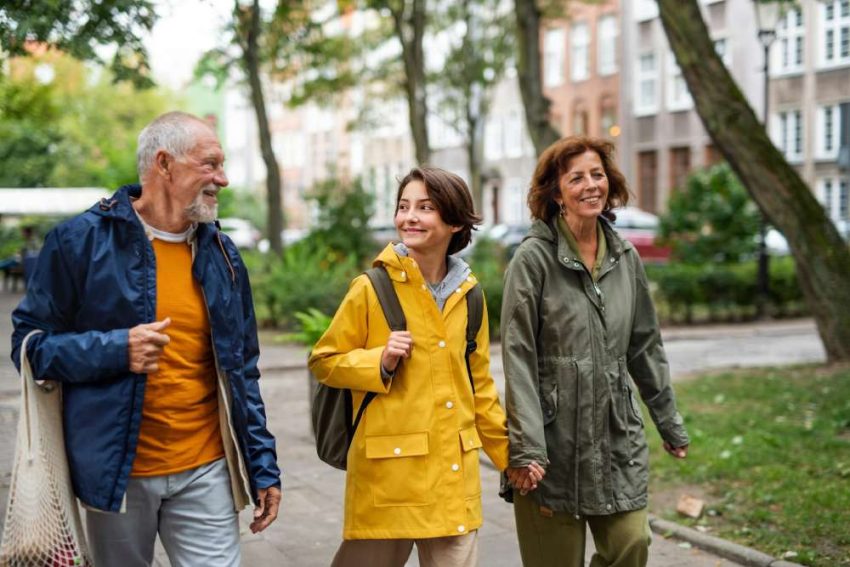Walkable cities offer a unique blend of convenience, leisure, and education that can transform family outings into unforgettable adventures. With pedestrian-friendly streets, families can easily navigate from one location to the next, discovering vibrant neighborhoods, lush parks, and engaging cultural sites. Whether exploring urban centers or planning things to do with kids in Boston, walkable cities provide enriching experiences that cater to all ages, supporting an active and connected lifestyle.
These cities often have well-maintained pathways, clear signage, and abundant public amenities, ensuring families can explore safely and comfortably. By encouraging pedestrian exploration, walkable cities empower families to engage deeply with their surroundings, fostering a sense of connection to the community and environment.
The Benefits of Walkability for Families
One of the most significant advantages of walkable cities is their ability to promote healthier living. Families who embrace walking as part of their daily routine reap the benefits of increased physical activity, fresh air, and improved mental health. Walking naturally encourages cardiovascular fitness and weight management, offering a simple yet effective way to maintain a healthy lifestyle for adults and children.
This sustainable mode of transport reduces reliance on cars, lowering environmental impact while saving money on transportation costs. Furthermore, walking together encourages quality family time, away from screens and distractions, fostering closer relationships. The slow walking pace allows families to converse, observe, and share discoveries, creating a platform for meaningful interactions and lasting family bonds.
Exploring Cultural and Historical Landmarks
Walkable cities are rich with cultural and historical landmarks that glimpse the local heritage and art scene. Museums, galleries, monuments, and theaters often cluster in walkable downtown areas, making them easily accessible. As families stroll through these cultural hubs, they are invited to delve into the stories and traditions that shape the city’s identity.
Children are naturally curious, and these sites provide valuable opportunities for learning and inspiration. Parents can engage their kids with stories about the history and significance of these places, turning a simple walk into an educational journey. Many cultural institutions offer interactive exhibits and family-friendly programs, ensuring that visitors of all ages can enjoy and appreciate the diversity of human expression and achievement.
Green Spaces and Outdoor Activities
Green spaces are essential to walkable cities, offering a haven for families to relax and play. Parks, gardens, and waterfronts serve as playgrounds where children can run, climb, and explore. These areas provide an idyllic setting for picnics, nature walks, and outdoor sports, fostering a love for nature and active living. Green spaces often host family-friendly events such as concerts, festivals, and farmer’s markets, further enhancing their appeal.
The expansiveness of these areas encourages imaginative play, allowing children to invent games and stories inspired by their surroundings. Families can also engage in group activities like yoga classes or community gardening projects, which promote wellness and social interaction in a picturesque setting.
Supporting Local Businesses
Walkable cities support thriving local economies, as pedestrian traffic encourages the growth of small businesses. From quaint cafes and artisanal shops to bustling markets and family-owned restaurants, these establishments offer diverse culinary and shopping experiences. Exploring these businesses allows families to engage with the local community, discover unique products, and savor regional flavors.
The intimate scale of walkable neighborhoods often fosters direct interactions between business owners and patrons, enhancing community and personal connection. Moreover, supporting local businesses helps sustain the city’s economy and build community resilience, as these enterprises contribute to job creation and cultural vibrancy. Families can enjoy the authenticity of local offerings and participate in the city’s dynamic ecosystem of small-scale entrepreneurship.
Fostering Community and Learning
Walkability fosters a sense of community, as frequent interactions with neighbors and fellow pedestrians create social bonds. Parents and children naturally encounter new friends and build networks while exploring their city. Shared spaces, such as libraries, recreation centers, and public plazas, often host educational programs, games, and workshops. These activities facilitate social engagement and continuous learning for children.
For instance, community-led initiatives include storytelling sessions, art classes, or science fairs encouraging children to pursue knowledge and creativity. To further understand the significance of community engagement, consider this insightful resource on urban neighborhoods. By fostering a culture of collaboration and support, walkable cities create an environment where families thrive, and individuals feel connected to the broader tapestry of urban life.
Incorporating Walkable Adventures in Your Travels
When planning family vacations, choosing walkable destinations can enhance the travel experience. Exploring a city on foot allows families to immerse themselves in the local culture and discover hidden gems the guidebooks might miss. Walkable neighborhoods often feature vibrant street art, bustling markets, and spontaneous performances, adding excitement and charm to the journey. Look for accommodations near city centers to minimize the need for transportation and maximize walking opportunities.
Many cities offer walking tours, bike rentals, and public transit options that complement walkability, making travel convenient and eco-friendly. Families can use public transit to venture further afield, combining the pedestrian experience with other sustainable transport modes. This approach reduces travel stress, supports the local economy, and contributes to a more environmentally conscious travel experience.
Final Thoughts on Family-Friendly Walkable Cities
Walkable cities provide a tapestry of family-friendly adventures, where education, leisure, and community unite seamlessly. Families can enjoy enriched lives with healthier habits and stronger connections by exploring these urban environments. Walkable cities empower residents and visitors to authenticate with their surroundings, fostering vibrant and inclusive communities.
As cities prioritize pedestrian infrastructures, the potential for creating memorable, impactful experiences grows, offering families a sustainable and enjoyable way to engage with the world around them. These urban landscapes, with their blend of tradition and innovation, represent a model for harmonious living, inviting us all to step out, connect, and discover together.

